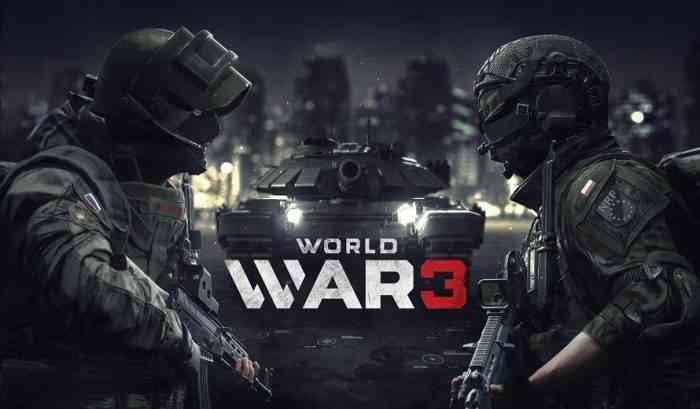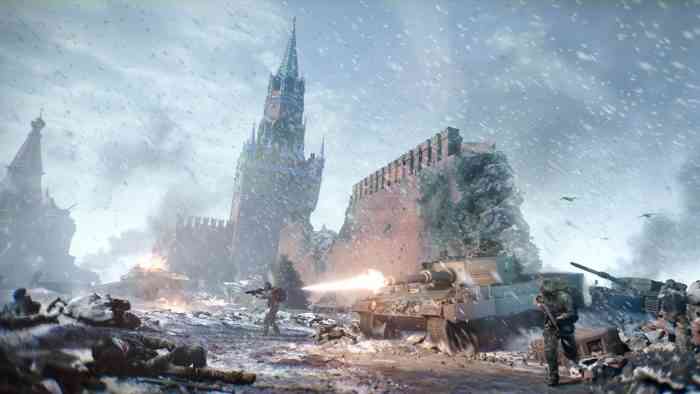World War 3 Preview
“World War 3 presents a modern conflict with tactics, techniques and procedures inspired by true combat engagements. … If it’s possible in real life, it’s possible in World War 3 – simple as that! … World War 3 is heavily grounded in military realism, offering accurate depictions of weapons, uniforms and equipment of national armed forces. All of it to inspire you to make the war effort personal and prove that your country is the dominant force on the battlefield.”
The above quote from World War 3’s Steam page paints a picture of what this Early Access title has in store for prospective players. The game features online team-based combat set in roughly forty-minute matches. Gritty military realism and the horrors of real-life combat are rarely portrayed properly in media, and that should come as no surprise. The reality of combat isn’t something to be taken lightly, and its portrayal, especially by someone presenting themselves as an authority on the topic, means impacting media consumers’ understandings of that reality as well as risking disrespecting those who have been involved in the conflicts. Because of this, reading World War 3’s Steam page made me a bit nervous. The name alone made me wary of what was to come, but you know what they say about judging a book by its cover.
Real life isn’t fair; it’s a sentiment that is widely understood. War especially isn’t fair. But what about war in video games? Fairness is a somewhat fundamental component of what’s considered ‘good’ game design. If the portrayal of war needs to be realistic, meaning unfair, then the game runs a very real risk of feeling unfair as a result. As things stand in World War 3, there is work yet to be done toward finding a respectable compromise between fairness and realism. Balancing of armor effectiveness and gun damage needs a lot of attention if they want the game to be truly enjoyable as a multiplayer experience.
Born to Kill
The promised “tactics, techniques and procedures inspired by true combat engagements” mentioned in the Steam store page are critical to survival in real-life combat situations. Unfortunately, that still relies on player knowledge of how to cooperate and execute on those tactics, techniques, and procedures. Without that knowledge, death is quick and frequent. Thankfully, respawn waits are brief. To make matters worse, the dedication to realism is betrayed for the sake of one of the aspects of the game that I feel is largely responsible for the balancing issues: score streak abilities. Implementing standard aspects of gamification into a game promising realism is an extremely slippery slope.

The gameplay is mostly fine, aside from the balancing issues. Gunplay feels nice, movement is okay though nothing revolutionary, the gadgets afforded by the different loadouts are interesting and easy to use, and customization possibilities are nearly excessive. It did bother me a bit that there is no controller support, but it’s not a major qualm. I will also say that the game does nothing to teach you about its game modes or your objectives. It just throws you into combat and assumes you know what to do. This can only mean a few things, none of them particularly good: 1) the game is so similar to other first person shooters that The Farm 51 assumed that players would know what to do without ANY instruction, 2) The Farm 51 isn’t considering the possibility that their players may be new to the genre, and 3) there is little to no attention on the tutorials before the game is finished. The controls are easy enough to pick up (especially with the little window listing a few of the key bindings), but explaining the objectives would be helpful for new players.
War is No Joke
The thing that bothered me most about the game, though, wasn’t long loading times, horrid resource-hogging, or the poor balancing. All of those are easy to fix over time and don’t reflect an issue with the design of the game at its core. What does, though, is the player’s speech. Remember earlier when I mentioned that media claiming to portray military combat realistically risked being disrespectful? This is why. After killing an enemy soldier, the player character will often deliver a one-liner. Among these are lines like “Fuck you in particular!” and “What a clusterfuck!”

In games like those in the Borderlands series, these kinds of lines would fit right in, but in a game selling itself on military realism, where the portrayal of live combat is presenting itself as being serious and true to life, lines like these being delivered by a soldier who has just killed another human being is simply not okay. It reflects poorly on the developers. It makes their promised military realism and combat seem more like a mere selling point than an attempt to properly exemplify the reality of the game’s theme. “But Jackson, it’s just a game!” Yes. It is a game, and that’s why it’s important.
The Farm 51 has something here. World War 3 could be a stellar game on full release. It really could. With rebalancing of its mechanics and plenty of polish, I feel that it could stand among many other well-acclaimed first-person shooters. What I would most look for moving forward (outside of performance and mechanical improvements) would be a reconsideration of how they’re portraying this game’s content as it relates to a portrayal of real-life military combat. Fortunately, with a predicted twelve to sixteen months in Early Access, this game could and likely will change dramatically.
** A PC preview was provided by the publisher **

